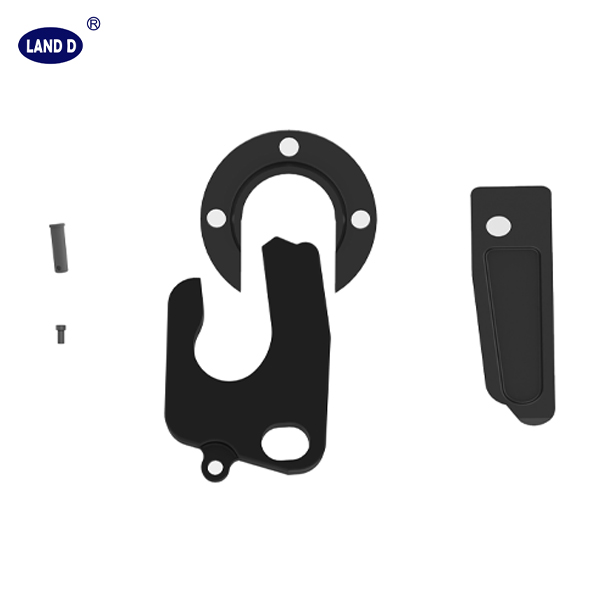Jul . 28, 2024 23:07 Back to list
Exploring Essential Components of Fifth Wheel Hitch Systems for Safe Towing Solutions and Performance
Understanding Fifth Wheel Hitch Parts A Comprehensive Guide
When it comes to towing large trailers, nothing beats the stability and strength of a fifth wheel hitch. Often used by RV enthusiasts and commercial haulers alike, fifth wheel hitches are designed to provide a secure connection between the towing vehicle and the trailer. Central to the functionality of these hitches are their various parts, each playing a crucial role in ensuring safe and efficient towing. This article delves into the essential components of a fifth wheel hitch and their significance, offering insights for both newcomers and seasoned users.
What is a Fifth Wheel Hitch?
A fifth wheel hitch is a type of trailer hitch typically mounted in the bed of a pickup truck. It consists of a coupler mechanism that engages a kingpin on the trailer, creating a strong connection that allows for better turning and weight distribution compared to standard hitch types. The design permits more maneuverability, making it an ideal choice for larger trailers, such as those used for recreational vehicles (RVs) or commercial transportation.
Key Components of Fifth Wheel Hitches
1. Base Rail and Installation Kit The base rail is the foundation for the hitch. It is mounted securely in the truck bed, providing stability and support for the fifth wheel hitch. The installation kit may include brackets and hardware necessary for securing the base rail, ensuring the hitch remains fixed while towing.
2. Hitch Head The hitch head is a critical part responsible for connecting the trailer's kingpin. It is designed to provide an optimal gripping force and includes features such as a jaw mechanism that locks around the kingpin. Some hitch heads come with cushioned designs, which help absorb shocks and reduce jerking during transit.
3. Kingpin The kingpin is a cylindrical fitting attached to the front of the trailer. It is the connecting point that engages with the hitch head. The quality and durability of the kingpin are essential for safe towing, as it endures substantial stress while in operation.
fifth wheel hitch parts company

4. Tower or Support Legs These components extend from the hitch to the truck bed, providing additional support and stability. They play a vital role in weight distribution and ensuring that the hitch remains level, reducing wear on both the towing vehicle and the trailer.
5. Safety Chains Although the fifth wheel hitch offers a secure connection, safety chains act as a backup in case of failure. These chains should be attached to both the trailer and the towing vehicle, providing extra security during transit.
6. Slider Mechanism For those who require enhanced maneuverability, a sliding fifth wheel hitch allows drivers to adjust the position of the hitch; this is particularly useful for navigating tight turns or sharp angles.
Maintenance and Safety
Regular maintenance of fifth wheel hitch parts is crucial for safe towing. Users should periodically inspect components for wear and tear, ensuring that locking mechanisms engage properly and that there’s no visible damage to the hitch or kingpin. Lubrication of moving parts can prevent wear and enhance performance.
Conclusion
In conclusion, understanding the components and functionality of fifth wheel hitch parts is essential for anyone looking to tow large trailers securely. With proper installation and maintenance, these hitches provide an unparalleled towing experience, ensuring safety on the road. Whether you are a weekend warrior heading out for a camping trip or a professional hauler, investing in a quality fifth wheel hitch and its components guarantees peace of mind during your travels. Always remember that a well-maintained hitch translates directly to safety and reliability, which are paramount in the world of towing.
-
JOST TAPE Fifth Wheel 37C Repair Kits- Shijiazhuang Land Auto Component Ltd.|Durability, Compatibility
NewsAug.06,2025
-
JOST TAPE Fifth Wheel 37C Repair Kits - Shijiazhuang Land Auto Component Ltd.
NewsAug.06,2025
-
JOST TAPE Fifth Wheel 37C Repair Kits-Premium Trailer Parts&Durable Fifth Wheel Repair Solutions
NewsAug.06,2025
-
Heavy-Duty American Type Welding Series Suspension
NewsAug.06,2025
-
JOST TAPE Fifth Wheel 37C Repair Kits- Shijiazhuang Land Auto Component Ltd.|Durability&Compatibility
NewsAug.05,2025
-
JOST TAPE Fifth Wheel 37C Repair Kits-Shijiazhuang Land Auto Component Ltd.|Durability&Compatibility
NewsAug.05,2025
